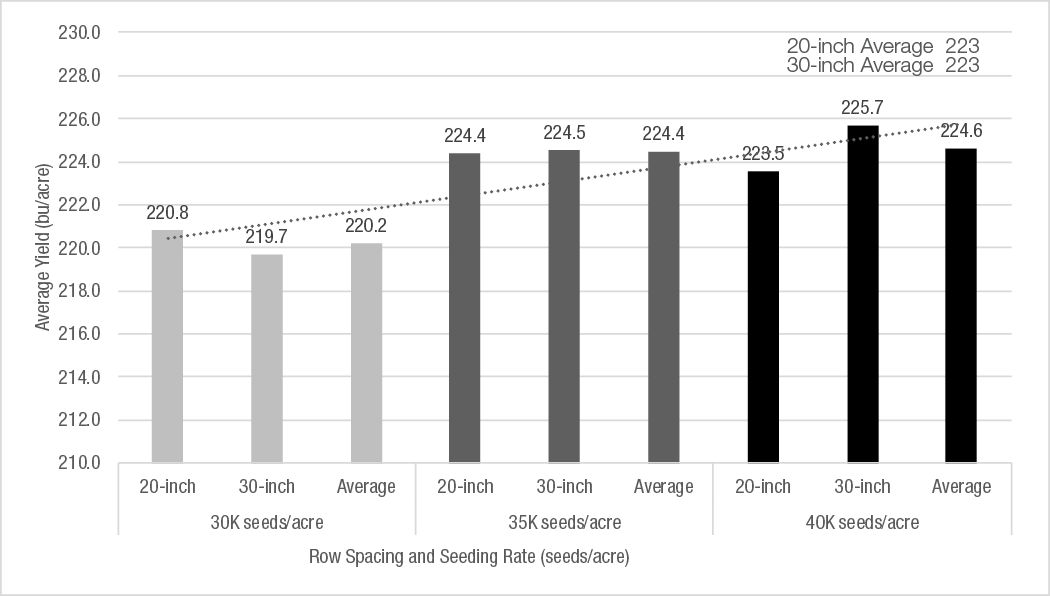10 MIN READ
Corn Yield Response to Plant Row Spacing and Seeding Rate
January 31, 2021
To compare yearly research data, click on a tab.
Corn Yield Response to Plant Row Spacing and Seeding Rate - 2020
TRIAL OBJECTIVE
Row spacing is usually a standardized or fixed practice in most operations. Unlike nitrogen and weed management which can be altered from year to year, most farmers don’t have the luxury of switching row spacing between years. This is partly due to high capital investment in farm equipment.
Proper row spacing allows plants to reach nutrients and avoid adverse effects of competition from neighboring plants. In Iowa, and in most regions of the Midwest, 20 inches and 30 inches are the most common row spacing configurations.
Coupled with seeding rate, row spacing affects canopy closure, weed control, disease development, late-season plant standability, and ultimately yield potential. The objective of this trial was to assess the effects of two row spacings on corn yield potential at three different seeding rates.
RESEARCH SITE DETAILS
Forty-eight corn brands were selected to represent the northern, central, and southern corn growing regions of Iowa. Huxley and Victor locations were lost due to the Derecho, and Marble Rock was lost due to environmental issues, which left us with Atlantic and Storm Lake.
Products were planted at 30,000 (30K); 35,000 (35K); and 40,000 (40K) seeds/acre in both 20-inch and 30-inch row spacings.
Tillage, weed and nitrogen management were the same for all products at the respective locations.
Trials were conducted in 10 ft by 35 ft plots with three replications at Atlantic and two replications at Storm Lake (Figure 1).
UNDERSTANDING THE RESULTS

In this trial, the yield response to seeding rate at each row spacing varied greatly for various products tested.
The 35K seeding rate had a higher average yield for both row spacings but may or may not have a positive return on seed investment.
Overall, 20- and 30-inch row spacings yielded similarly at each seeding rate.
Seeding rate had minimal effect on grain moisture content, but 20-inch row spacing had 1.2% less grain moisture on average across plant densities.
The 20-inch row spacing had a win rate of 52% at the 30K seeding rate. The 30-inch row spacing had a win rate of 52% at 35K; and 54% at 40K seeding rates.
KEY LEARNINGS
In past years, each trial location carried out several row spacing trials in which 20-inch row spacing had consistently out-yielded 30-inch row spacing. However, those trials usually included a limited number of products.
A virtue of adjusting plant configuration, 20-inch is expected to perform better than 30-inch row spacing, especially at higher seeding rates. However, a few products had better average yields at 20-inch compared to 30-inch row spacing at all seeding rates.
Crop yield response to farm operations can be highly variable, and often significantly affected by environmental conditions during the growing season. Growers should test new products and concepts on a small scale to see how it fits in their operation.
Growers should consult trusted agronomists and dealers when selecting the best products for their operation.